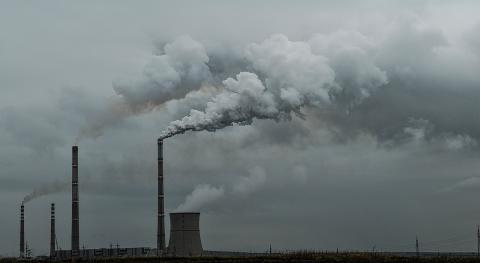Could the Ohio River Valley be a carbon capture and storage hub?

Listen to this Episode
In the concluding weeks of what’s shaping up to be the hottest year on record, world leaders met at the U.N.’s annual climate conference to discuss ways to curb climate change.
One of the proposed solutions discussed there could be especially effective in the Ohio River Valley.
It’s called carbon capture, utilization and storage, or CCUS.
“Carbon capture and storage is a set of technologies that allow anybody to capture carbon dioxide from the smokestack of the industrial plant, isolate the carbon dioxide molecule, capture it, and then store it underground,” said Aniruddha Sharma, the chair and CEO of Carbon Clean, a company that develops this technology.
Essentially, it aims to reduce industrial greenhouse gas emissions by removing carbon dioxide from the atmosphere, or preventing it from even entering the atmosphere in the first place.
Here’s why that’s important
Right now, carbon dioxide emissions from the industrial sector make up about a quarter of total greenhouse gas emissions in the United States.
Critics of carbon capture argue those industries should focus on cutting back emissions in the first place rather than trying to catch and store them after they’re produced. They say large-scale carbon capture is untested and unfeasible.
Sharma advocates for capture, he said, because cutting back isn’t easy, especially when it comes to the production of materials like steel and cement.
“We need these commodities to progress and go forward, and you would always have process emissions from them,” he explained.
CCUS technologies wouldn’t force industries to reduce their fossil fuel intake, but the technology does offer a means of limiting CO2 output into the atmosphere.
In fact, it’s one of four ways the U.S. Department of Energy identified to reduce industrial emissions.
But up until the passage of the Inflation Reduction Act, it hasn’t made economic sense for many small and mid-sized industries to invest in the technology.
The EFI Foundation and the Horizon Climate Group — two organizations focused on climate solutions — recently released a report that assessed just how much carbon dioxide emissions could be cut if these industries entered the carbon capture realm.
It suggested forming regional carbon capture hubs to reduce emissions.
"Hubs can be important for realizing the emissions reduction opportunity of CCUS because their shared infrastructure can significantly decrease the economic, technical, and logistical barriers to CCUS deployment for small-to-midsize emitters,” the report read.
It outlined 10 potential hubs across the country, including a Great Lakes Region hub, which would encompass northwestern Ohio, along with parts of Indiana, Michigan and Illinois.
But one of the best places to implement a hub, Sharma said, is the Ohio River Valley.
“I would say it's maybe one of the top four places in the US where you have a very good concentration of CO2 emitters that could be decarbonized,” he said.
Why the Ohio River Valley?
The Ohio River Valley is a hotbed of industry.
Historically, the region has been a key player in the production of steel, but there’s also a strong presence of petroleum and natural gas production there.
The report identified about 130 carbon dioxide emitting units across eastern Ohio, Pennsylvania and West Virginia that could benefit from being part of a CCUS hub.
“The whole infrastructure around carbon capture, transport and storage or decarbonization in general could be democratized across a couple of these units,” Sharma said.
And there’s another reason why the Ohio River Valley could be the right region to develop a CCUS hub: its geology.
“The whole area is blessed with the geology where CO2 could be actually stored for a very, very long time,” Sharma said, “permanently, actually.”
What does the region’s carbon capture future look like?
Sharma thinks the future of carbon capture and storage in the Ohio River Valley looks promising.
According to the EFI report, the technology could capture millions of tons of carbon dioxide from the region each year — 12% of the total emitted from industrial facilities in Ohio, Pennsylvania and West Virginia.
“I'm actually quite excited that we would see some action pretty soon in terms of people implementing these carbon capture units,” Sharma said.
He said West Virginia is applying for a permit from the U.S. Environmental Protection Agency to store carbon dioxide underground.
If the state is successful, other states in the region could follow suit, paving the way for the technology to become more widespread.
9(MDYwODMwNTczMDE2ODk5NTExNDAyNzM5Ng000))
- Home
- Schedules
- TV
- TV
- Local TV Programs
- Business | Life 360 with Kristi K.
- Toledo Stories
- To The Point with Doni Miller
- Listening with Keith Burris
- Ideas & Insights
- WGTE Presents
- BL360: Northwest Ohio Innovation Consortium
- Magic of the Old West End
- Freedom Means Never Surrender
- I&I: The Random Factor
- FF: National Cherry Festival
- TTP: Moms Demand Action For Gun Sense in America
- Watch Live
- Radio
- Education
- Community
- Support
- About
- Donate
- Watch Live


